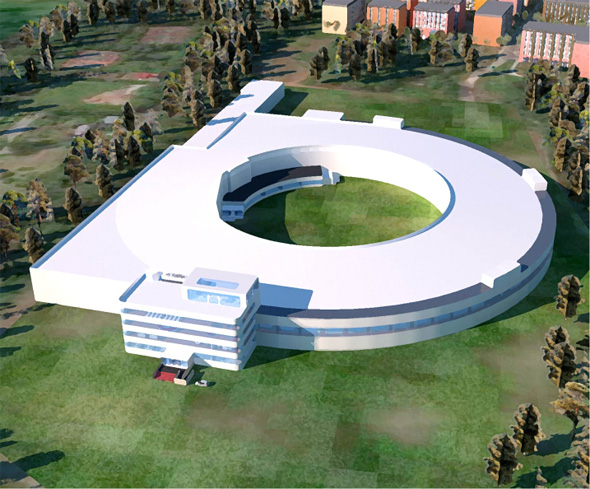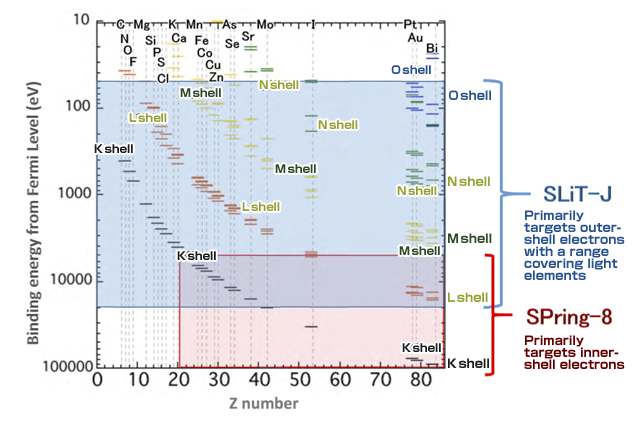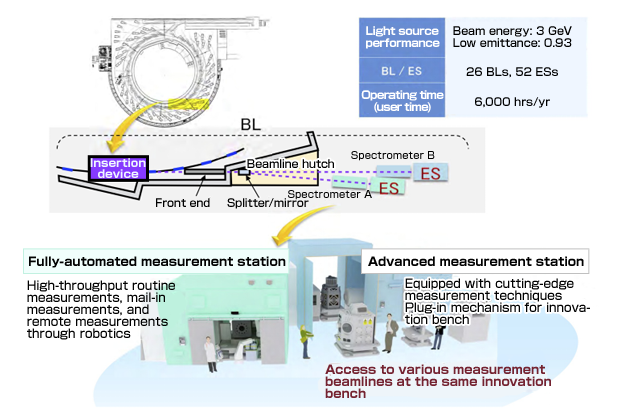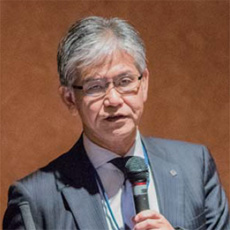The Impact of an Advanced 3-GeV Synchrotron Facility on Materials Engineering as Well as Industrial Science and Technology -Tangible and Intangible Impacts of the SLiT-J Project-
- Observation

-

-

-

- Toward 5-nm spatial resolution, with the most-stable as well as 100 times greater brightness and 100 times better coherence
- SLiT-J will haves a brightness that surpasses all other 3-GeV synchrotron radiation facilities in the world
- Pursuing a light source that provides 6,000 hours of stable operation annually
Changing perspectives with a next-generation synchrotron radiation source
The way we look at things is about to change with the next-generation synchrotron radiation source, an optimized electron source with low emittance. The best feature of synchrotron radiation is its element selectivity. The application of higher brightness and coherence is also expected to enable better visualization of material functions. We have been working to evolve from discrete measurements to integrated measurements capable of discerning functions and only recently have had success in doing so.
Utilizing polarization of synchrotron radiation, we are beginning to make inroads into visualizing behavior in the magnetic domain at 100-nanometer resolution. We have combined computer tomography and XAFS spectroscopy at micrometer resolution to selectively and three-dimensionally visualize elements and their chemical states in fuel cells. We have also three-dimensionally visualized the effects of cracks on the reaction progress in all-solid-state lithium-ion batteries.
Currently, the process of such visualizations is extremely time-consuming, but it is expected to require less time with next-generation synchrotron radiation. Next-generation synchrotron radiation will improve spatial resolution from 100 nm to 5 nm and brightness and coherence by 100-fold each, which is expected to provide an enormous contribution to materials science.
The Synchrotron Light in Tohoku, Japan (SLiT-J) project
Low-emittance synchrotron radiation was born through the evolution of the electron storage ring. As we transition from current to next-generation synchrotron radiation, the number of bending magnets (the number of bends) shifts from two to many. The SPring-8 II project has plans for five bends. However, after a study was conducted on the light source performance required by our users, it was determined that a Double-Double Bend Achromat (DDBA) lattice configured of four bending magnets would be adopted for SLiT-J (Figure 1).
The brilliance of SLiT-J will exceed that of other 3-GeV synchrotron radiation facilities throughout the world, and the light source will have a resolution in the soft X-ray region that is 1/100th or less of the facilities overseas. The business ecosystem at SLiT-J is conceived as an innovation ecosystem sustainable through industry-academia collaboration. We will strive to ensure the cooperation of academia and competition among companies.
3-GeV synchrotron radiation can target a broad spectral range, focusing on outer-shell electrons (Figure 2). In order to accelerate innovation, at SLiT-J we have set our sights on a light source capable of operating stably 6000 hours per year, which has no precedent in the world. In order to improve efficiency, standalone measuring instruments will be provided so that experiments can be performed promptly with no loss in time for beam tuning (Figure 3).
Future developments
We have been holding discussions on implementing this innovation ecosystem, not only with academia and industry, but also with NIMS, AIST, the Japan Business Federation, and various banks. We aim to establish a system incorporating the utilization and support of analytical companies in order to strengthen the platform of our business ecosystem.
Next-generation synchrotron radiation will revolutionize scientific techniques, speeding up the hypothesis-test cycle. We intend to promote industrial applications for materials science along with projects like the Element Strategy Initiative.

Figure 1 Conceptual rendering of the SLiT-J facility

Figure 2 The spectral range of 3-GeV synchrotron radiation covers light elements while targeting outer-shell electrons

Figure 3 Beamlines (BL) and Endstations (ES) for increased throughput

Masaki Takata
Institute of Multidisciplinary Research for Advanced Materials
Tohoku University